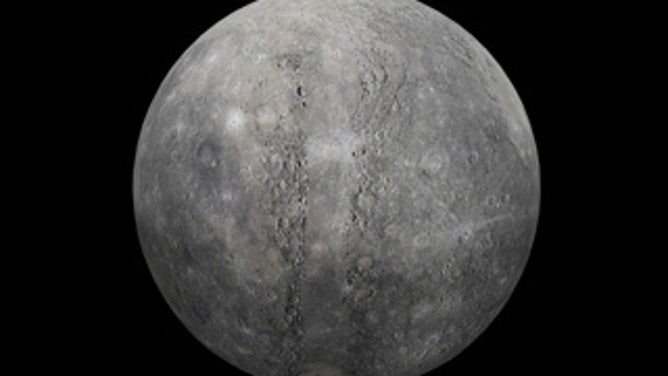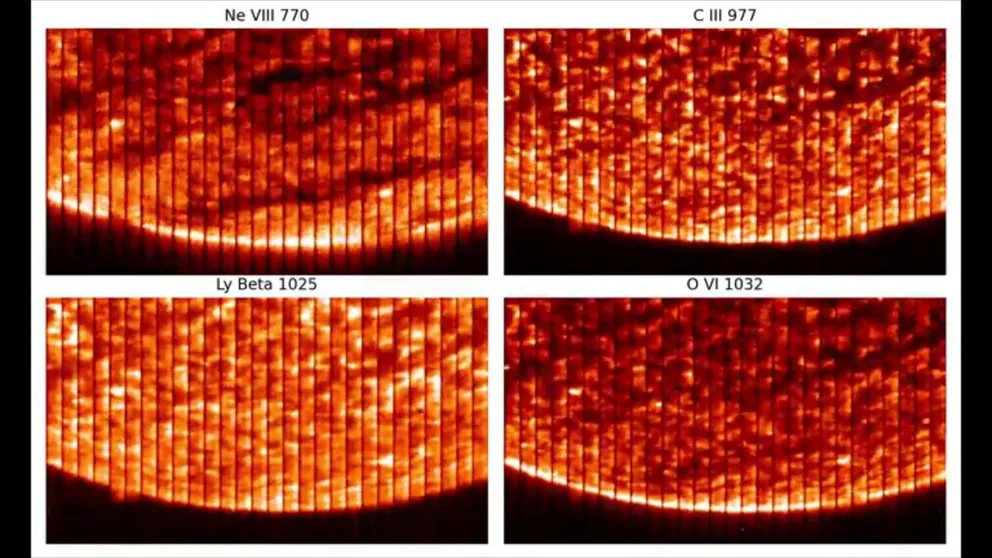Diamond in the rough: Could Mercury have layers of gemstones?
Mercury is considered to be the smallest planet in the solar system and is only slightly larger than Earth’s Moon. Despite being close to the Sun, the planet experiences extremes of cold and hot temperatures. NASA says daytime temperatures are thought to reach upwards of 800 °F while overnight readings can dip as low as -300 °F.
Watch Mercury fly by the sun
An orbiter captured stunning imagery of the planet Mercury appearing to pass close by the sun. (European Space Agency)
A recently published study suggests that Mercury might be home to an extensive layer of diamonds beneath its surface, but don’t expect an extensive excavation effort anytime soon.
The study, published in the journal Nature Communications, proposes that the layer of gemstones may lie hundreds of miles below the planet’s surface and could be responsible for Mercury’s magnetic field.
Researchers noted that data from NASA’s Messenger mission identified patches of graphite on the planet’s surface, which could be a sign of diamonds deep below the surface.
Little is known about Mercury, the innermost planet in the solar system, as no spacecraft has ever landed on it.
NASA estimates that the planet is only slightly larger than Earth’s Moon and despite its relatively close proximity to the Sun, experiences extreme temperatures.
The space agency reports that daytime temperatures on Mercury can reach up to 800 °F, while nighttime temperatures can plummet as low as -300 °F.
SEE THE OBJECTS HUMANS LEFT BEHIND ON THE MOON

<strong>Rendering of the planet Mercury</strong>
(NASA)
Previous research suggested that internal temperatures and pressures were insufficient to allow carbon to crystallize into diamonds, but study authors now believe otherwise.
"We re-evaluate carbon speciation in Mercury’s interior in light of the high pressure-temperature experiments, thermodynamic models and the most recent geophysical models of the internal structure of the planet. Although a sulfur-free melt would have been in the stability field of graphite, sulfur dissolution in the melt under the unique reduced conditions depressed the sulfur-rich liquidus to temperatures spanning the graphite-diamond transition," study authors stated.
The gemstones could play a crucial role in the planet’s heat transfer and chemical interactions, leading to the magnetic field.
Without ground surveys, it is likely that scientists will never know definitively on what is happening internally in the rather small planet.
NASA says the "Swift Planet" has a radius of just 1,516 miles, which is slightly larger than Earth’s Moon.
STUNNING VIDEO SHOWS MERCURY PASSING BY THE SUN
Mercury has a thin exosphere rather than a true atmosphere, making it vulnerable to extreme conditions such as meteor strikes, temperature fluctuations and radiation.
The closest any spacecraft has come to Mercury is a few hundred miles. However, within a year, the BepiColombo mission - an international effort led by the European Space Agency and the Japan Aerospace Exploration Agency - is expected to enter the planet’s orbit.
The mission, consisting of two spacecraft, will study Mercury’s interior, surface and magnetic field but will not attempt a landing.
